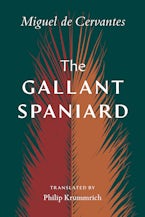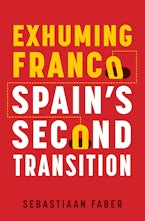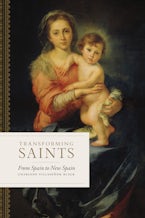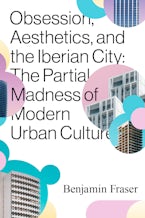- Home
- A Laboratory of Her Own
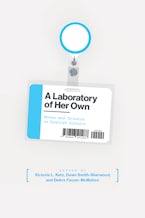
A Laboratory of Her Own
Women and Science in Spanish Culture
Edited by Victoria L. Ketz, Dawn Smith-Sherwood and Debra Faszer-McMahon
A Laboratory of Her Own gathers diverse voices to address women's interaction with STEM fields in the context of Spanish cultural production. This volume focuses on the many ways the arts and humanities provide avenues for deepening the conversation about how women have been involved in, excluded from, and represented within the scientific realm.
While women's historic exclusion from STEM fields has been receiving increased scrutiny worldwide, women within the Spanish context have been perhaps even more peripheral given the complex sociocultural structures emanating from gender norms and political ideologies dominant in nineteenth- and twentieth-century Spain. Nonetheless, Spanish female cultural producers have long been engaged with science and technology, as expressed in literature, art, film, and other genres. Spanish arts and letters offer diverse representations of the relationships between women, gender, sexuality, race, and STEM fields.
A Laboratory of Her Own studies representations of a diverse range of Spanish women and scientific cultural products from the late nineteenth through the twenty-first centuries. STEM topics include the environment, biodiversity, temporal and spatial theories, medicine and reproductive rights, neuroscience, robotics, artificial intelligence, and quantum physics. These scientific themes and other issues are analyzed in narratives, paintings, poetry, photographs, science fiction, medical literature, translation, newswriting, film, and other forms.
While women's historic exclusion from STEM fields has been receiving increased scrutiny worldwide, women within the Spanish context have been perhaps even more peripheral given the complex sociocultural structures emanating from gender norms and political ideologies dominant in nineteenth- and twentieth-century Spain. Nonetheless, Spanish female cultural producers have long been engaged with science and technology, as expressed in literature, art, film, and other genres. Spanish arts and letters offer diverse representations of the relationships between women, gender, sexuality, race, and STEM fields.
A Laboratory of Her Own studies representations of a diverse range of Spanish women and scientific cultural products from the late nineteenth through the twenty-first centuries. STEM topics include the environment, biodiversity, temporal and spatial theories, medicine and reproductive rights, neuroscience, robotics, artificial intelligence, and quantum physics. These scientific themes and other issues are analyzed in narratives, paintings, poetry, photographs, science fiction, medical literature, translation, newswriting, film, and other forms.
Table of Contents
Acknowledgments
Foreword
Roberta Johnson
Introduction
“The Story of Women and STEM in Spanish Culture”
Victoria L. Ketz, Dawn Smith-Sherwood, & Debra Faszer-McMahon
Part I: On Role Models: Female Scientists and Spanish Letters
Chapter One
“Las chicas raras de STEM: Recuperating #WomensPlace in Spanish Literary and Scientific Histories”
Dawn Smith-Sherwood
Chapter Two
“‘The Doctor Is In’: Elena Arnedo Soriano (1941-2015), Women’s Health, and the Cultural History of Gender and Medicine in Spain”
Silvia Bermúdez
Chapter Three
“Gender and the Critique of ‘Ascientific Traditions’: Science as Text and Intertext in Rosa Montero’s La ridícula idea de no volver a verte”
Ellen Mayock
Chapter Four
“From la santidad de la escoba to la trinidad higiénica: Rosario de Acuña (1851-1923) and a More Inclusive Vision of Spain’s Public Health
Erika M. Sutherland
Chapter Five
“Science, History, and Gender: An Interview with María Jesús Santesmases”
María Jesús Santesmases, Victoria L. Ketz and Debra Faszer-McMahon
Part II: On STE(A)M: Integrating Scientific Inquiry into the Cultural Realm
Chapter Six
“Science in the Works of Clara Janés: A Poetics of Theoretical (Meta)physics”
Debra Faszer-McMahon
Chapter Seven
“An Extension of Sympathy: Science and Posthumanism in the Paintings of Remedios Varo”
Marta del Pozo Ortea
Chapter Eight
“Subversive, Combative, Corrective: Carmen de Burgos’ Interventionist Translation of Möbius’ Űber den physiologischen Schwachsinn des Weibes [The Mental Inferiority of Women]”
Leslie Anne Merced
Chapter Nine
“Contrasting Images of Women Scientists in the Early Post-war Period (1940-45)
and the Novel María Elena, ingeniero de caminos by Mercedes Ballesteros
Miguel Soler Gallo
Chapter Ten
“Unorthodox Theories and Beings: Science, Technology, and Women in the Narratives of Rosa Montero”
Maryanne L. Leone
Part III: On Gender: Using STEM to Critique Gendered Roles
Chapter Eleven
“Biotech, Barceló, Bustelo: Reproduction, Motherhood and Gendered Hierarchies
in Spanish Science Fiction”
Mirla González
Chapter Twelve
“Challenging Boundaries of Time, Science, and Gender: Einstein’s Theory of Relativity in Mayoral’s ‘Admirados colegas’”
Victoria L. Ketz
Chapter Thirteen
“Technological Portrayals: Framing Fernandinas in the Colonial Context through Photography and Press during the Spanish Second Republic”
Inés Plasencia
Chapter Fourteen
“Punishing Narratives: The Challenges of Gender and Scientific Authority
in Spanish Science Fiction Film”
Raquel Vega-Durán
Appendix: List of Works by Genre Addressed in this Volume
Index
Acknowledgments
Foreword
Roberta Johnson
Introduction
“The Story of Women and STEM in Spanish Culture”
Victoria L. Ketz, Dawn Smith-Sherwood, & Debra Faszer-McMahon
Part I: On Role Models: Female Scientists and Spanish Letters
Chapter One
“Las chicas raras de STEM: Recuperating #WomensPlace in Spanish Literary and Scientific Histories”
Dawn Smith-Sherwood
Chapter Two
“‘The Doctor Is In’: Elena Arnedo Soriano (1941-2015), Women’s Health, and the Cultural History of Gender and Medicine in Spain”
Silvia Bermúdez
Chapter Three
“Gender and the Critique of ‘Ascientific Traditions’: Science as Text and Intertext in Rosa Montero’s La ridícula idea de no volver a verte”
Ellen Mayock
Chapter Four
“From la santidad de la escoba to la trinidad higiénica: Rosario de Acuña (1851-1923) and a More Inclusive Vision of Spain’s Public Health
Erika M. Sutherland
Chapter Five
“Science, History, and Gender: An Interview with María Jesús Santesmases”
María Jesús Santesmases, Victoria L. Ketz and Debra Faszer-McMahon
Part II: On STE(A)M: Integrating Scientific Inquiry into the Cultural Realm
Chapter Six
“Science in the Works of Clara Janés: A Poetics of Theoretical (Meta)physics”
Debra Faszer-McMahon
Chapter Seven
“An Extension of Sympathy: Science and Posthumanism in the Paintings of Remedios Varo”
Marta del Pozo Ortea
Chapter Eight
“Subversive, Combative, Corrective: Carmen de Burgos’ Interventionist Translation of Möbius’ Űber den physiologischen Schwachsinn des Weibes [The Mental Inferiority of Women]”
Leslie Anne Merced
Chapter Nine
“Contrasting Images of Women Scientists in the Early Post-war Period (1940-45)
and the Novel María Elena, ingeniero de caminos by Mercedes Ballesteros
Miguel Soler Gallo
Chapter Ten
“Unorthodox Theories and Beings: Science, Technology, and Women in the Narratives of Rosa Montero”
Maryanne L. Leone
Part III: On Gender: Using STEM to Critique Gendered Roles
Chapter Eleven
“Biotech, Barceló, Bustelo: Reproduction, Motherhood and Gendered Hierarchies
in Spanish Science Fiction”
Mirla González
Chapter Twelve
“Challenging Boundaries of Time, Science, and Gender: Einstein’s Theory of Relativity in Mayoral’s ‘Admirados colegas’”
Victoria L. Ketz
Chapter Thirteen
“Technological Portrayals: Framing Fernandinas in the Colonial Context through Photography and Press during the Spanish Second Republic”
Inés Plasencia
Chapter Fourteen
“Punishing Narratives: The Challenges of Gender and Scientific Authority
in Spanish Science Fiction Film”
Raquel Vega-Durán
Appendix: List of Works by Genre Addressed in this Volume
Index
Victoria L. Ketz is chair of the Department of Global Languages, Literatures, and Perspectives and a professor of Spanish at La Salle University.
Dawn Smith-Sherwood is a professor of Spanish at Indiana University of Pennsylvania.
Debra Faszer-McMahon is dean of the School of Humanities and a professor of Spanish at Seton Hill University.
"This is a careful, cogent, fascinating, and well-researched collection of essays about the cultural, historical, and political contexts in which artists and authors interrogated STEM and gender themes in Spain. . . . A groundbreaking collection."
—Mary Wyer, editor of Women, Science, and Technology: A Reader in Feminist Science Studies


